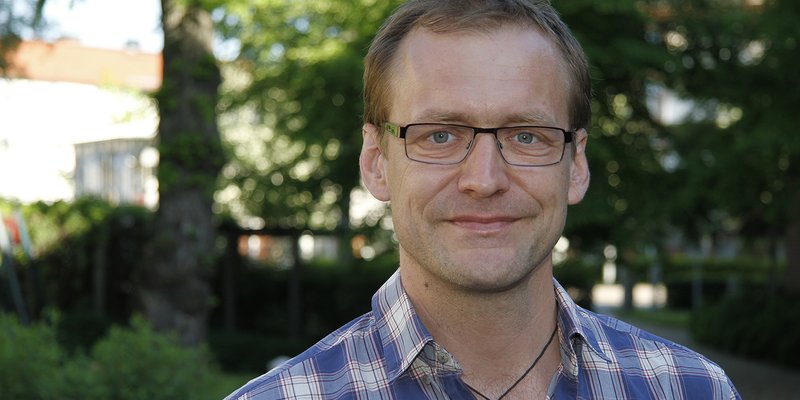Quality Assurance Work in Healthcare: How Uniformity, Structure and Measurability Help Achieve More Equal Care

Today, all healthcare institutions are expected to have proactive quality-assurance and development policies in place. That being the case, as a change manager, what should you do to ensure that your development project yields concrete results and helps achieve better-quality healthcare?
Experience shows that a common vision, clear measurement points and ongoing monitoring – including continuous comparison with other, similar healthcare institutions – lay the foundation for success.

Robert Sarkadi Kristiansson
Robert Sarkadi Kristiansson, Chief Medical Officer at Region Uppsala’s Close care and health Unit, is a passionate change agent with his sights set on creating more equal and better-quality healthcare for everyone in Sweden.
“The healthcare system can’t remedy society’s inequalities. On the other hand, it can promote equality by making sure that everyone who seeks medical care gets the best help possible. The aim of our QA efforts in the healthcare sector is to be able to offer each and every person the best possible care based on the available resources,” Robert explains.
A Clear Vision & Continuous Monitoring the Key to Progress
Robert believes that the key to better healthcare is an increased focus on both measuring and following up on the results of the care provided. A basic prerequisite for being able to evaluate a result is that everyone working within a department or nursing team must share the same idea of what good healthcare involves. Presently, however, it is not especially uncommon for each medical speciality to establish its own separate vision detailing what is important and what results it aims to achieve.
“The aim must be to create a consensus across the entire department as to its goals and what is important, while always keeping the patient’s goals and results in sharp focus. Only then is it possible to ask the right questions and gather the information needed to assign a diagnosis and administer the right treatment,” says Robert.
However, the information collected through dialogue with a patient is more than simply input data that allow medical staff to provide them with the right care on each occasion. In reality, monitoring results over time also lays the foundation for targeted QA efforts and for improving healthcare on an on-going basis.
“In this instance, the opportunity to involve patients in their care can also serve as an important tool. While most patients today want to be involved in their own care, their participation can also be a means to develop and improve healthcare as a whole,” Robert explains.
Daring to Compare Units Important
Increased opportunities to measure and document the results of different healthcare measures also provide the chance to compare the work of individual departments and institutions.
“If we measured the availability and quality-related results of different units operating within the same field of specialisation today, we would undoubtedly get varying results. At the same time, it is possible to show from a purely statistical standpoint that fewer variations in results leads to better healthcare overall. Consequently, one important intermediate goal is to even out results among institutions and reduce variation in healthcare,” says Robert.
The idea is that by encouraging comparisons and benchmarks among different healthcare units, they will all have the opportunity to improve, at the same time as variation decreases. Units whose performance is weakest by comparison can aim to improve to the level of units in the middle of the range, while the group as a whole strives to draw closer to the level of those units that perform best. Naturally, insight into the work of units that perform best is also valuable, since understanding how good results are achieved can help other units to improve.
“To improve healthcare, we need to make a genuine effort to implement management by knowledge. We need to take transparent measurements and to dare to ask ourselves why we get such different results. It’s a matter of monitoring, comparing and drawing conclusions about what can be improved,” says Robert in summary.
US Healthcare a Model for Development Efforts
Robert believes that the US healthcare system is ahead of its Swedish counterpart when it comes to performing transparent measurements, evaluating their results and acting on the findings. Nevertheless, there are a handful of Swedish institutions that are leading the way in development efforts using a management-by-knowledge approach. He explains:
“SWEDEHEART, Sweden’s largest quality registry for heart-related healthcare, is well advanced in its efforts to use measurements and comparisons as the basis for methodical development work. All those involved in cardiology in Sweden have joined forces in a joint vision that aims to reduce patients’ mortality and morbidity and improve cost-efficiency in healthcare. One important tool in achieving this vision is constant measurement and comparison among different healthcare institutions with cardiology units.”
Managers Must Be Capable of Directing Change
Effecting change requires more than just the realisation that change is needed. Those responsible for directing change processes must also have the knowledge and tools needed to succeed.
“The risk of negative consequences is high if the focus lies solely on proving who is best and singling out who is worst. Good leadership has the potential to help those who are lagging behind to improve by taking a different approach to their work or restructuring their operations,” Robert explains.
In fact, Robert himself works as an instructor in a programme that aims to train qualified managers in how to implement change processes and QA work in the healthcare sector. Chief medical officers, senior administrators and development managers working in healthcare who take part in the programme gather over a period of 4-5 weeks to share their experiences and learn more about change processes.
“Without dedicated and competent leaders to manage a change process, there is a major risk that the initial enthusiasm among those involved will die out after the first pilot project. It’s important that, from the outset, there is a plan in place for how the project will be run after the initial pilot project is over. That’s the only way we can achieve lasting progress in the pursuit of more equal and better-quality healthcare,” Robert concludes.
Read more about eHealth, click here
